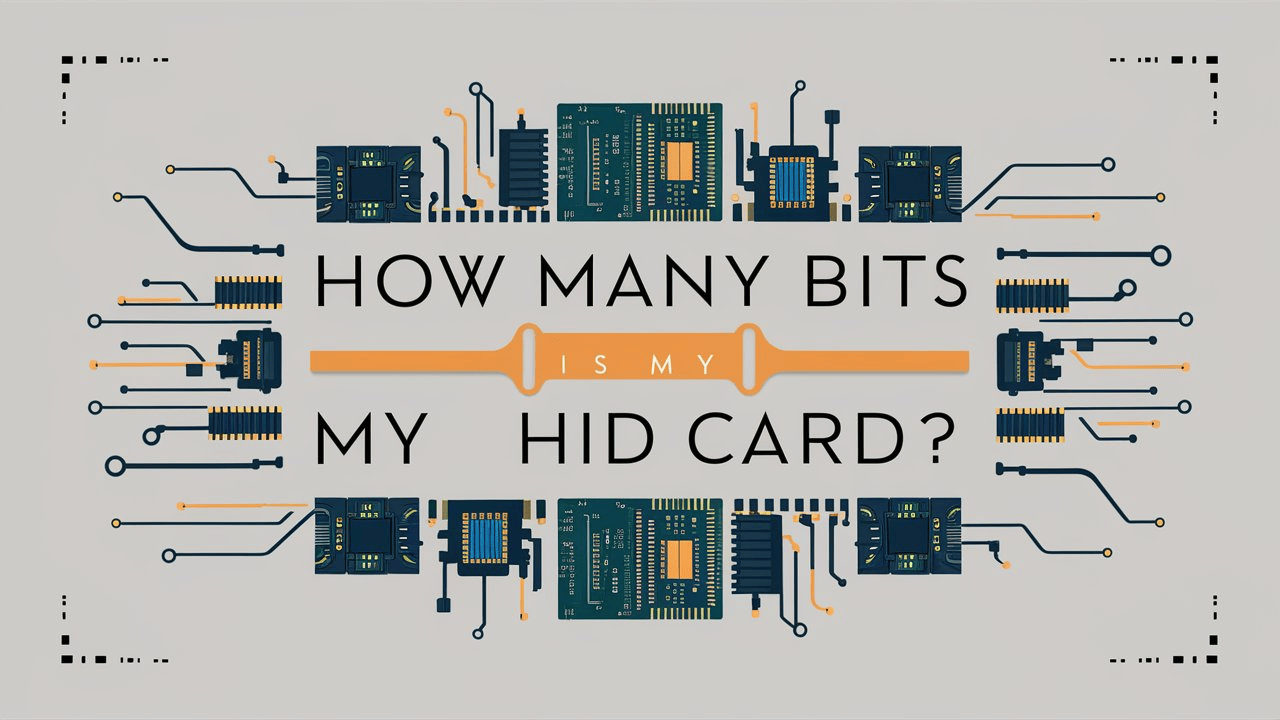In the intricate world of access control and security systems, the humble HID card plays a crucial role that often goes unnoticed by the average user. These small, plastic rectangles that we casually swipe or tap to enter buildings, access secure areas, or clock in for work are actually marvels of modern technology. But have you ever wondered about the invisible digital dance that occurs when you present your card to a reader? At the heart of this electronic handshake lies a key factor: the number of bits in your HID card.
The bit count of an HID card might seem like an obscure technical detail, but it's a fundamental aspect that determines the card's security level, its capacity for storing information, and its compatibility with various systems. From the basic cards to the more advanced HID 37 bit proximity cards, the bit count plays a paramount role in determining how many unique cards can be issued within a system and how resistant they are to duplication or hacking attempts.
But what exactly does it mean when we talk about the number of bits in an HID card? How does this seemingly abstract number translate into real-world security and functionality? And how can you determine how many bits your own HID card has? Let’s find out!
What are Bit Formats in HID Cards?
At its core, the bit format of HID access control cards refers to the structure of data stored on the card. This data typically includes:
- Facility Code: Identifies the organization or building
- Card Number: A unique identifier for each card
- Parity Bits: Used for error checking
The total number of bits determines how this information is encoded and how many unique combinations are possible.
Read More Articles: What Size is a Standard HID Card?
Common HID Card Bit Formats
HID offers several bit formats, each with its own characteristics:
26-Bit Format (Industry Standard):
- 8 bits for Facility Code (0-255)
- 16 bits for Card Number (0-65,535)
- 2 parity bits
HID 37 bit proximity cards:
- 16 bits for Facility Code (0-65,535)
- 19 bits for Card Number (0-524,287)
- 2 parity bits
35-Bit Corporate 1000 Format:
- 12 bits for Facility Code (0-4,095)
- 21 bits for Card Number (0-2,097,151)
- 2 parity bits
Comparison of Common HID Card Bit Formats
- Format 26-Bit
- Total Bits 26
- Facility Code Bits 8
- Card Number Bits 16
- Unique Cards Possible 65,536
- Format 37-Bit
- Total Bits 37
- Facility Code Bits 16
- Card Number Bits 19
- Unique Cards Possible 524,288
- Format 35-Bit
- Total Bits 35
- Facility Code Bits 12
- Card Number Bits 21
- Unique Cards Possible 2,097,152
Security Implications of Different Bit Formats
26-Bit Format: The Industry Standard
The 26-bit format has been a staple in the access control industry for years. While it's widely compatible with many systems, it has some limitations:
- Limited Unique Combinations: With only 16 bits for the card number, there are 65,536 possible unique cards per facility code.
- Increased Duplication Risk: The limited number of combinations means there's a higher chance of card number duplication across different facilities.
- Widely Available: Many proximity card manufacturers produce 26-bit cards, making them easier to replicate.
37-Bit Format: Enhanced Security
The HID 37 bit proximity cards offer significant improvements over the 26-bit format:
- Expanded Unique Combinations: With 19 bits for the card number, it allows for over 500,000 unique cards per facility code.
- Reduced Duplication Risk: The vastly increased number of possible combinations significantly reduces the risk of accidental duplication.
- Custom Formats: Many 37-bit cards use proprietary formats, adding an extra layer of security.
Corporate 1000 Format: Tailored Security
The 35-bit Corporate 1000 format is designed for large organizations with specific security needs:
- Unique Facility Code: HID assigns a unique facility code to each organization, ensuring no overlap with other companies.
- Massive Card Number Range: With 21 bits for the card number, it allows for over 2 million unique cards per organization.
- Improved Control: Organizations have more control over card issuance and management.
Read More Articles: The Best Views from Wineries in Barossa Valley
How to Determine Your HID Card's Bit Count?
Identifying the bit count of HID access control cards can be challenging without specialized equipment. However, here are some methods:
- Check with your system administrator or security team.
- Look for markings on the card itself (some cards have the format printed on them).
- Use a card reader capable of displaying the bit format.
- Consult the documentation for your access control system.
HID prox II cards typically come in various bit formats, so the card type alone doesn't determine the bit count.
Security Considerations
While higher bit counts generally offer more security, it's important to note that bit counts alone don't guarantee a secure system. Other factors to consider include:
- Encryption methods used
- Physical security of card readers and control panels
- Protocols for issuing and revoking cards
- Regular security audits and update
Future Trends in HID Card Technology
As technology evolves, we're seeing new trends in HID prox cards:
- Multi-technology cards combining proximity and smart card features
- Mobile credentials that emulate traditional card bit formats
- Biometric integration for multi-factor authentication
These advancements are pushing the boundaries of what's possible with access control, often while maintaining compatibility with existing bit format structures.
Smart Choices, Secure Futures
Are your bits in a twist trying to figure out your HID card's secret identity? Don’t worry, for Bristol ID Technologies is here to be your access control superhero! Whether you're rocking the classic HID prox II cards or living on the edge with HID 37 bit proximity cards, we've got the lowdown on your high-tech plastic pal. Our team of bit-whisperers can not only tell you how many bits you're packing but also help you level up your security game!
